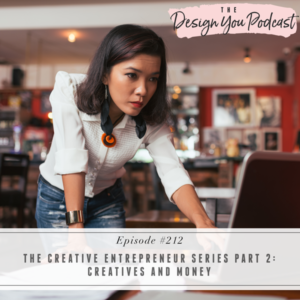
There is so much to talk when it comes to creatives and money. There should be little surprise that many of us are operating more like charities or even hobbyists when it comes to money, and we’re proving that starving artist mentality we all know so well to be true. But it doesn’t have to be this way.
Many of us don’t have a positive relationship with money because we have inherited and internalized the cultural and societal messaging we have received all our lives regarding productivity, and we believe that having the money we want requires endlessly hustling until we get there. But it’s time to change that narrative.
In this episode, find out what it really takes to start making the money you want as a creative, and how to start making money without the hustle. I’m showing you how you might be accidentally opting out of making money, and three skillsets you need to build to make the money you want.





